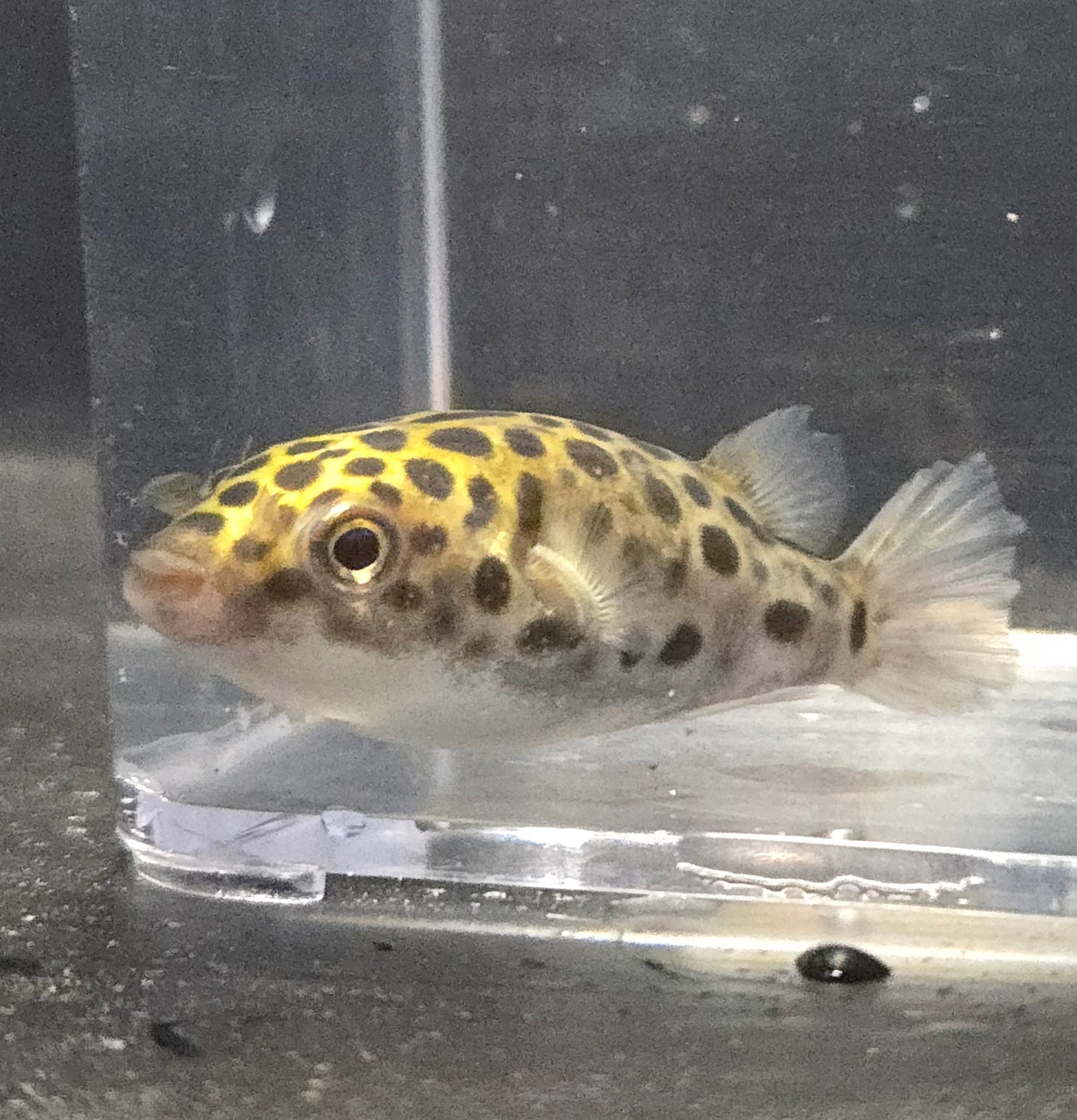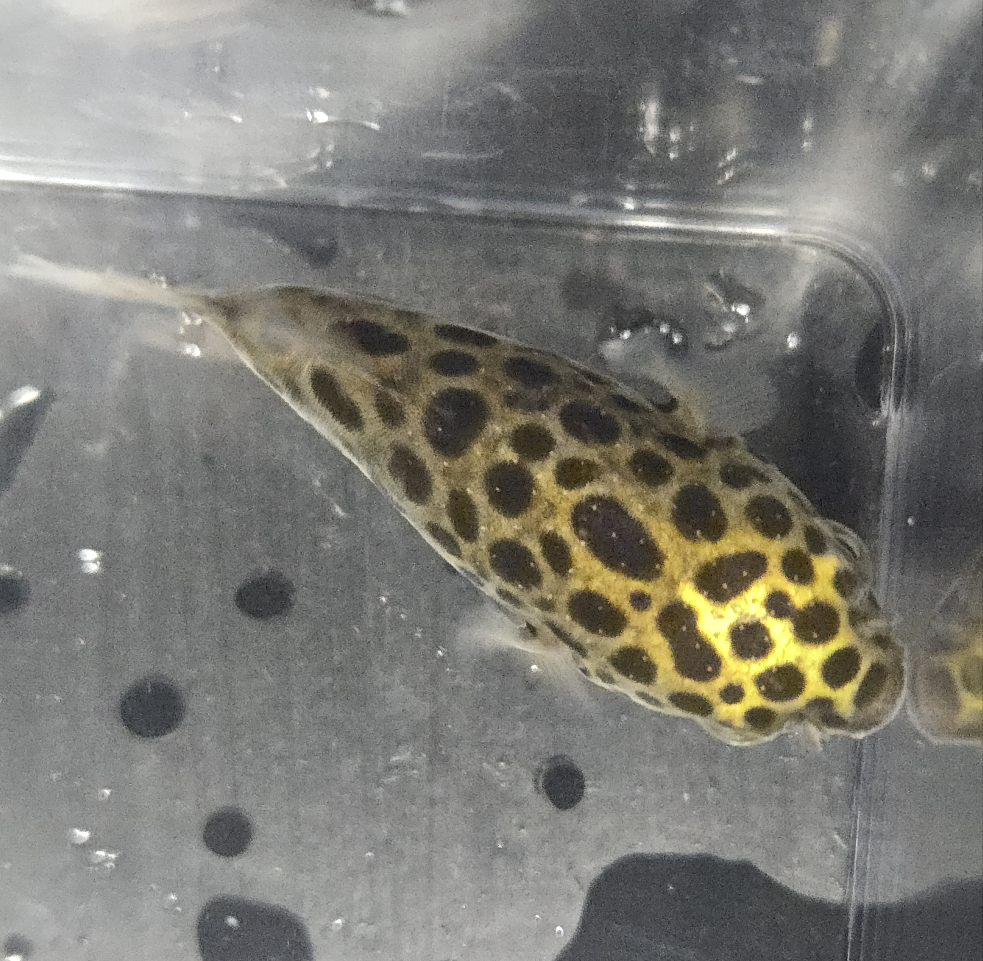Fancy Fish and Aquascapes
Green Spotted Puffer ~ Tetraodon nigroviridis
Green Spotted Puffer ~ Tetraodon nigroviridis
Couldn't load pickup availability
The Green Spotted Puffer is a fascinating and highly intelligent freshwater to brackish fish, known for its vibrant green body adorned with black spots and its playful, curious personality. Native to Southeast Asia, these fish are a favorite among experienced aquarists due to their unique appearance and engaging behavior. However, they require specific care and a specialized environment to thrive.
- Size: 4-6 inches
- Lifespan: 10-15 years
- Temperament: Semi-aggressive, territorial
- Group/Solitary: Best kept singly or in spacious tanks with carefully chosen tankmates
- Food: Carnivorous, live/frozen foods (snails, shrimp, bloodworms)
- Water Requirements: 76-82°F, pH 7.5-8.5, brackish water (specific gravity: 1.005-1.020 as adults)
In the wild, Green Spotted Puffers inhabit freshwater and brackish estuaries, mangroves, and coastal waters across Southeast Asia. Juveniles typically live in freshwater but gradually require more brackish conditions as they mature. In aquariums, a transition to brackish water (with the appropriate salinity) is essential for their long-term health. A spacious tank with plenty of hiding spots using rocks and driftwood is recommended, as puffers can be territorial and nippy, particularly with slow or long-finned tankmates.
Green Spotted Puffers are carnivores with strong, ever-growing teeth that need regular wear to prevent overgrowth. A diet of crunchy foods like snails, clams, and shrimp helps keep their teeth in check. They are messy eaters, so robust filtration and regular water changes are necessary to maintain water quality.
These puffers are highly interactive and can learn to recognize their owners, often begging for food and showing curiosity about their environment. Enrichment through decorations, caves, and moving décor keeps them mentally stimulated.
Interesting Fact: Green Spotted Puffers are among the few aquarium fish that exhibit problem-solving skills and display unique personalities. Their intelligence allows them to interact with their environment in ways few other fish do, making them a joy to observe in well-maintained tanks.
Share






